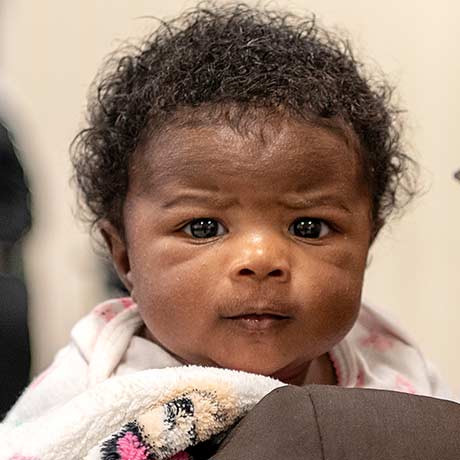
Finding neurology's 'holy grail'
 As the largest land-grant institution in the state and the only academic health center in central Ohio, The Ohio State University has a responsibility to lead the way in reducing health care disparities in its communities and serve as a model for Ohio, and the nation. Located in Columbus, the 14th largest city in the country— which also sits in close proximity to Appalachia—The Ohio State University College of Medicine and The Ohio State University Wexner Medical Center (external link) are uniquely positioned to tackle the health care challenges of our state’s urban and rural residents, many of whom are considered underserved populations.
As the largest land-grant institution in the state and the only academic health center in central Ohio, The Ohio State University has a responsibility to lead the way in reducing health care disparities in its communities and serve as a model for Ohio, and the nation. Located in Columbus, the 14th largest city in the country— which also sits in close proximity to Appalachia—The Ohio State University College of Medicine and The Ohio State University Wexner Medical Center (external link) are uniquely positioned to tackle the health care challenges of our state’s urban and rural residents, many of whom are considered underserved populations.
“We need more coordinated solutions focused on dismantling social determinants of health and reducing health disparities,” says Cheryl Lee, MD (external link), chief health equity officer for the Ohio State Wexner Medical Center and chair of the Department of Urology for the Ohio State College of Medicine. “Together, we can effect structural and systemic change. We will fully engage faculty, staff and learners across the medical center, The Ohio State University’s seven health science colleges and broader university community, along with community organizations, local, state and federal government agencies and other external stakeholders.”
Ohio State has developed a multipronged approach to reduce health care disparities, knowing that we must make improvements at many levels to ensure that everyone in our communities have the opportunity to attain full health potential. This includes:
Dr. Lee points to long-established medical center initiatives to address specific disparities, such as Moms2B (external link), which is reducing infant mortality rates in several neighborhoods across central Ohio. Then there is newer work, like Ohio State’s efforts in reducing disparities between Black and white patients undergoing colorectal cancer screening, as well as reducing disparities in flu and COVID-19 vaccine uptake among white and nonwhite residents.
Ohio State supports Partners Achieving Community Transformation (PACT) a partnership that started in 2010 with the City of Columbus, the Columbus Metropolitan Housing Authority and Near East Side stakeholders. Its goal is to create a healthy, financially and environmentally sustainable community where residents have access to safe and affordable housing, quality health care and education, and employment opportunities on the Near East Side of Columbus, Ohio. PACT has since created new, mixed-income, modern apartments as well as new low-income housing for seniors.
Additionally, the PACT organization launched an exterior home repair grant program to help over 30 homeowners repair their homes for free.
Within the PACT footprint, the Wexner Medical Center is currently renovating a vacant library to create a Healthy Community Center, aimed at increasing access to healthful foods and nutrition education as a way to decrease obesity and chronic disease in the community. Opening in early 2023, the Healthy Community Center will include a fresh market, a retail café, a demonstration and teaching kitchen and meeting spaces. Not only will the center offer services for healthy eating, but also job training for youth and adults.
The eventual goal, she says, is to extend our community outreach to create more partnerships and extend the initiatives’ success beyond central Ohio. “We have so many projects already in full swing, but I believe the Office of Health Equity, Diversity and Inclusion will expand the reach of these projects into new areas as we increase institutional awareness, augment resources and leverage new partnerships to make the work even more impactful. We want to translate discovery into community improvements.”
The Ohio State College of Medicine is also home to the university’s health equity pillar as part of its campus wide RAISE initiative, which is short for race, inclusion and social equity.
RAISE is a five-year faculty hiring and retention initiative that’s working to build an academic community attentive to shifting demographics. Its goal is to add 50 new faculty members and 10 postdoctoral fellows across campus. This transformative strategic hiring initiative will build a world-class research program on social equity and racial disparities.
Dr. Lee serves as the director for the university’s Center for Health Equity and partners with the college’s department chairs to recruit health equity faculty through the RAISE initiative.